《TCP/IP网络互连技术 卷2 设计与实现 英文版·第2版》
| 作者 | (美)(D.E.科默)Douglas E.Comer,(美) 编者 |
|---|---|
| 出版 | 北京:清华大学出版社 |
| 参考页数 | 612 |
| 出版时间 | 1998(求助前请核对) 目录预览 |
| ISBN号 | 7302029474 — 求助条款 |
| PDF编号 | 87631928(仅供预览,未存储实际文件) |
| 求助格式 | 扫描PDF(若分多册发行,每次仅能受理1册) |
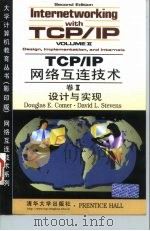
Chapter 1 Introduction And Overview1
1.1 TCP/IP Protocols1
1.2 The Need To Understand Details1
1.3 Complexity Of Interactions Among Protocols2
1.4 The Approach In This Text2
1.5 The Importance Of Studying Code3
1.6 The Xinu Operating System3
1.8 Summary4
1.7 Organization Of The Remainder Of The Book4
Chapter 2 The Structure Of TCP/IP Software In An Operating System7
2.1 Introduction7
2.2 The Process Concept8
2.3 Process Priority9
2.4 Communicating Processes9
2.5 Interprocess Communication12
2.13 UDP Output12
2.6 Device Drivers, Input , And Output14
2.7 Network Input and Interrupts14
2.9 Passing Datagrams From IP To Transport Protocols16
2.8 Passing Packets To Higher Level Protocols16
2.10 Delivery To Application Programs18
2.11 Information Flow On Output19
2.12 From TCP Through IP To Network Output20
2.14 Summary21
Chapter 3 Network Interface Layer27
3.1 Introduction27
3.2 The Network Interface Abstraction28
3.4 Local Host Interface31
3.3 Logical State Of An Interface31
3.5 Buffer Management32
3.6 Demultiplexing Incoming Packets35
3.7 Summary36
Chapter 4 Address Discovery And Binding(ARP)39
4.1 Introduction39
4.2 Conceptual Organization Of ARP Software40
4.3 Example ARP Design40
4.4 Data Structures For The ARP Cache41
4.5 ARP Output Processing44
4.6 ARP Input Processing49
4.7 ARP Cache Management53
4.8 ARP Initialization58
4.9 ARP Configuration Parameters59
4.10 Summary59
Chapter 5 IP:Global Software Organization61
5.1 Introduction61
5.2 The Central Switch61
5.3 IP Software Design62
5.4 IP Software Organization And Datagram Flow63
5.5 Byte-Ordering In The IP Header76
5.6 Sending A Datagram To IP77
5.7Table Maintenance80
5.8 Summary82
Chapter 6 IP:Routing Table And Routing Algorithm85
6.1 Introduction85
6.2 Route Maintenance And Lookup85
6.3 Routing Table Organization86
6.4 Routing Table Data Structures87
6.5 Origin Of Routes And Persistence89
6.6 Routing A Datagram89
6.7 Periodic Route Table Maintenance96
6.8 IP Options Processing104
6.9 Summary105
Chapter 7 IP:Fragmentation And Reassembly107
7.1 Introduction107
7.2 Fragmenting Datagrams107
7.3 Implementation Of Fragmentation108
7.4 Datagram Reassembly113
7.5 Maintenance Of Fragment Lists122
7.6 Initialization124
7.7 Summary124
Processing(ICMP)127
8.1Introduction127
8.2 ICMP Message Formats127
8.3 Implementation Of ICMP Messages127
8.4 Handling Incoming ICMP Messages130
8.5 Handling An ICMP Redirect Message132
8.6 Setting A Subnet Mask133
8.7 Choosing A Source Address For An ICMP Packet135
8.8 Generating ICMP Error Messages136
8.9 Avoiding Errors About Errors139
8.10 Allocating A Buffer For ICMP140
8.11 The Data Portion Of An ICMP Message142
8.12 Generating An ICMP Redirect Message144
8.13 Summary145
9.2 Maintaining Multicast Group Membership Information147
Chapter 9 IP : Multicast Processing(IGMP)147
9.1 Introduction147
9.3 A Host Group Table148
9.4 Searching For A Host Group150
9.5 Adding A Host Group Entry To The Table151
9.6 Configuring The Network Interface For A Multicast Address152
9.7 Translation Between IP and Hardware Multicast Addresses154
9.8 Removing A Multicast Address From The Host Group Table156
9.9 Joining A Host Group157
9.10 Maintaining Contact With A Multicast Router158
9.11 Implementing IGMP Membership Reports160
9.12 Computing A Random Delay161
9.13 A Process To Send IGMP Reports163
9.14 Handling Incoming IGMP Messages164
9.15 Leaving A Host Group165
9.16 Initialization Of IGMP Data Structures167
9.17 Summary168
10.2 UDP Ports And Demultiplexing171
10.1 Introduction171
Chapter 10 UDP : User Datagrams171
10.3 UDP175
10.4 UDP Output Processing185
10.5 Summary188
Chapter 11 TCP : Data Structures And Input Processing191
11.1 Introduction191
11.2 Overview Of TCP Software192
11.3 Transmission Control Blocks192
11.4 TCP Segment Formal196
11.5 Sequence Space Comparison198
11.6 TCP Finite State Machine199
11.7 Example State Transition200
11.8 Declaration Of The Finite State Machine200
11.9 TCB Allocation And Initialization202
11.10 Implementation Of TheFinite State Machine204
11.11 Handling An Input Segment205
11.12 Summary214
12.2 CLOSED State Processing217
12.1 Introduction217
Chapter 12 TCP : Finite State Machine Implementation217
12.3 Graceful Shutdown218
12.4 Timed Delay After Closing218
12.5 TIME-WAIT State Processing219
12.6 CLOSING State Processing221
12.7 FIN-WAIT-2 State Processing222
12.8 FIN-WAIT-1 State Processing223
12.9 CLOSE-WAIT State Processing225
12.10 LAST-ACK State Processing227
12.11 ESTABLISHED State Processing228
12.12 Processing Urgent Data In A Segment229
12.13 Processing Other Data In A Segment231
12.14 Keeping Track Of Received Octets233
12.15 Aborting A TCP Connection236
12.16 Establishing A TCP Connection237
12.17 Initializing A TCB237
12.18 SYN-SENT State Processing239
12.19 SYN-RECEIVED State Processing240
12.20 LISTEN State Processing243
12.21 Initializing Window Variables For A New TCB244
12.22 Summary246
Chapter 13 TCP : Output Processing247
13.1 Introduction247
13.2 Controlling TCP Output Complexity247
13.3 The Four TCP Output States248
13.4 TCP Output As A Process248
13.5 TCP Output Messages249
13.6 Encoding Output States And TCB Numbers250
13.7 Implementation Of The TCP Output Process250
13.8 Mutual Exclusion251
13.9 Implementation Of The IDLE State252
13.10 Implementation Of The PERSIST State252
13.11 Implementation Of The TRANSUIT State253
13.12 Implementation Of The RETRANSMIT State255
13.13 Sending A Segment255
13.14 Computing The TCP Data Length259
13.15 Computing Sequence Counts260
13.16 Other TCP Procedures261
13.17 Summary267
Chapter 14 TCP : Timer Management269
14.1 Introduction269
14.2 A General Data Structure For Timed Events269
14.3 A Data Structure For TCP Events270
14.4 Timers, Events, And Messages271
14.5 The TCP Timer Process272
14.6 Deleting A TCP Timer Event274
14.7 Deleting All Events For A TCB275
14.8 Determining The Time Remaining For An Event276
14.9 Inserting A TCP Timer Event277
14.10 Starting TCP Output Without Delay279
14.11 Summary280
Chapter 15 TCP : Flow Control And Adaptive Retransmission283
15.1 Introduction283
15.2 The Difficulties With Adaptive Retransmission284
15.3 Tuning Adaptive Retransmission284
15.4 Retransmission Timer And Backoff284
15.5 Window-Based Flow Control287
15.6 Maximum Segment Size Computation291
15.7 Congestion Avoidance And Control295
15.8 Slow-Start And Congestion Avoidance296
15.9 Round Trip Estimation And Timeout299
15.10 Miscellaneous Notes And Techniques305
15.11 Summary306
Chapter 16 TCP : Urgent Data Processing And The Push Function309
16.1 Introduction309
16.2 Out-Of-Band Signaling309
16.4 Interpreting The Standard310
16.3 Urgent Data310
16.5 Configuration For Berkeley Urgent Pointer Interpretation313
16.6 Informing An Application313
16.7 Reading Data From TCP314
16.8 Sending Urgent Data316
16.9 TCP Push Function317
16.10 Interpreting Push With Out-Of-Order Delivery318
16.11 Implementation Of Push On Input319
16.12 Summary320
Chapter 17 Socket-Level Interface323
17.1 Introduction323
17.2 Interfacing Through A Device323
17.3 TCP Connections As Devices325
17.4 An Example TCP Client Program326
17.5 An Example TCP Server Program327
17.6 Implementation Of The TCP Master Device329
17.7 Implementation Of A TCP Slave Device337
17.8 Initialization Of A Slave Device351
17.9 Summary352
Chapter 18 RIP : Active Route Propagation And Passive Acquisition355
18.1 Introduction355
18.2 Active And Passive Mode Participants356
18.3 Basic RIP Algorithm And Cost Metric356
18.4 Instabilities And Solutions357
18.5 Message Types361
18.6 Protocol Characterization361
18.7 Implementation Of RIP362
18.8 The Principle RIP Process365
18.9 Responding To An Incoming Request370
18.10 Generating Update Messages372
18.11Initializing Copies Of An Update Message373
18.12 Generating Periodic RIP Output378
18.13 Limitations Of RIP379
18.14 Summary379
Chapter 19 OSPF : Route Propagation With An SPF Algorithm381
19.1 Introduction381
19.2 OSPF Configuration And Options382
19.3 OSPF s Graph-Theoretic Model382
19.4 OSPF Declarations386
19.5 Adjacency And Link State Propagation391
19.6 Discovering Neighboring Gateways With Hello392
19.7 Sending Hello Packets394
19.8 Designated Router Concept399
19.9 Electing A Designated Router400
19.10 Reforming Adjacencies After A Change404
19.11 Handling Arriving Hello Packets406
19.12 Adding A Gateway To The Neighbor List408
19.13 Neighbor State Transitions410
19.14 OSPF Timer Events And Retransmissions412
19.15 Determining Whether Adjacency Is Permitted414
19.16 Handling OSPF input415
19.17 Declarations And Procedures For Link State Processing418
19.18 Generating Database Description Packets421
19.19 Creating A Template422
19.20 Transmitting A Database Description Packet424
19.21 Handling An Arriving Database Description Packet426
19.22 Handling Link State Request Packets432
19.23 Building A Link State Summary434
19.24OSPF Utility Procedures435
19.25 Summary439
Chapter 20 SNMP : MIB Variables, Representations,And Bindings441
20.1 Introduction441
20.2 Server Organization And Name Mapping442
20.3 MIB Variables443
20.4 MIB Variable Names444
20.6 Prefix Removal445
20.5Lexicographic Ordering Among Names445
20.7 Operations Applied To MIB Variables446
20.8 Names For Tables446
20.9 Conceptual Threading Of The Name Hierarchy447
20.10 Data Structure For MIB Variables448
20.11 A Data Structure For Fast Lookup450
20.12 Implementation Of The Hash Table452
20.13 Specification Of MIB Bindings452
20.14 Internal Variables Used In Bindings457
20.15 Hash Table lookup458
20.16 SNMP Structures And Constants461
20.17 ASN.I Representation Manipulation464
20.18 Summary474
Chapter 21 SNMP : Client And Server477
21.1 Introduction477
21.2 Data Representation In The Server477
21.3 Server Implementation478
21.4 Parsing An SNMP Message480
21.5 Converting ASN.1 Names In The Binding List484
21.6 Resolving A Query485
21.8 Indirect Application Of Operations487
21.7 Interpreting The Get-Next Operation487
21.9 Indirection For Tables490
21.10 Generating A Reply Message Backward491
21.11 Converting From Internal Form to ASN.I494
21.12 Utility Functions Used By The Server495
21.13 Implementation Of An SNMP Client496
21.14 Initialization Of Variables498
21.15 Summary500
22.1 Introduction503
Chapter 22 SNMP : Table Access Functions503
22.3 Object Identifiers For Tables504
22.4 Address Entry Table Functions504
22.2 Table Access504
22.5 Address Translation Table Functions511
22.6 Network Interface Table Functions521
22.7 Routing Table Functions529
22.8 TCP Connection Table Functions538
22.9Summary545
23.2 Statistical Analysis Of The Code547
Chapter 23 Implementation In Retrospect547
23.1 Introduction547
23.3 Lines Of Code For Each Protocol548
23.4 Functions And Procedures For Each Protocol550
23.5 Summary551
Appendix 1 Cross Reference Of Procedure Calls553
Appendix 2 Xinu Functions And Constants Used In The Code573
Bibliography589
Index597
1998《TCP/IP网络互连技术 卷2 设计与实现 英文版·第2版》由于是年代较久的资料都绝版了,几乎不可能购买到实物。如果大家为了学习确实需要,可向博主求助其电子版PDF文件(由(美)(D.E.科默)Douglas E.Comer,(美) 1998 北京:清华大学出版社 出版的版本) 。对合法合规的求助,我会当即受理并将下载地址发送给你。
高度相关资料
-

- TCP/IP网络互连技术 卷3 客户/服务器编程和应用 BSD套接字版 英文版·第2版
- 1998 北京:清华大学出版社
-

- TCP/IP网络原理与技术
- 1993
-
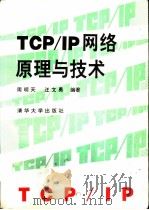
- TCP/IP网络原理与技术
- 1993 北京:清华大学出版社
-
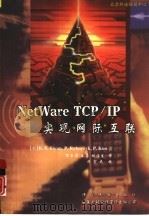
- NetWare TCP/IP实现网际互联
- 1997 清华大学出版社;西蒙与舒斯特国际出版公司
-

- 计算机互联网络技术与TCP/IP协议
- 1991 北京:海洋出版社
-
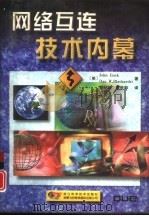
- 网络互连技术内幕
- 1998 杭州:浙江科学技术出版社;西蒙与舒斯特国际出版公司
-

- TCP/IP网络管理
- 1997 北京:电子工业出版社
-
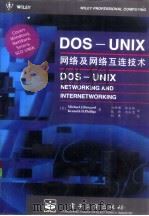
- Dos-Unix网络与网络互连技术
- 1996 北京:电子工业出版社
-

- TCP/IP与网络互联技术
- 1998 北京:电子工业出版社
-
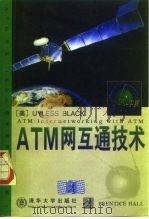
- ATM网互通技术 英文版
- 1998 北京:清华大学出版社
-

- Novell网络及其互联技术 第2版
- 1996 北京:电子工业出版社
-
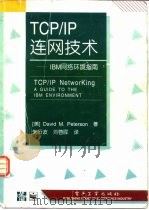
- TCP/IP连网技术 IBM网络环境指南
- 1996 北京:电子工业出版社
-
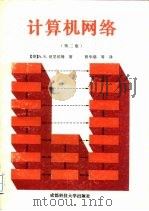
- 计算机网络 第2版
- 1989 成都:成都科技大学出版社
-
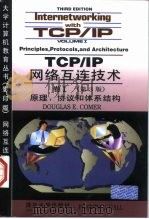
- TCP/IP网络互连技术 卷1 原理,协议和体系结构 英文版·第3版
- 1998 北京:清华大学出版社
提示:百度云已更名为百度网盘(百度盘),天翼云盘、微盘下载地址……暂未提供。➥ PDF文字可复制化或转WORD
